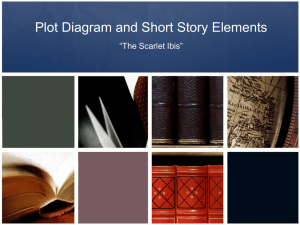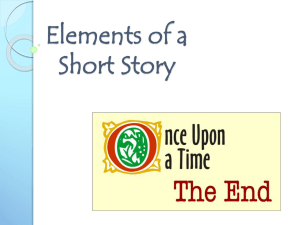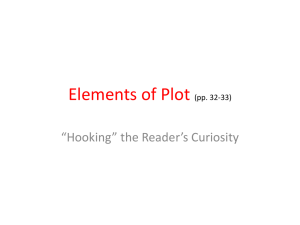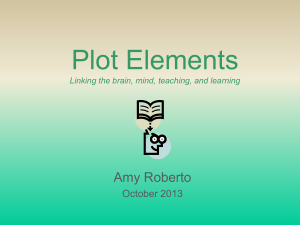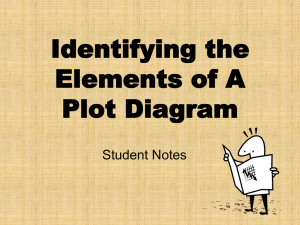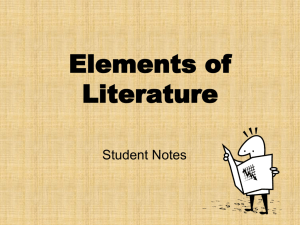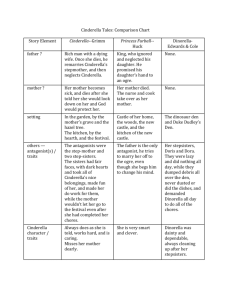Plot Elements
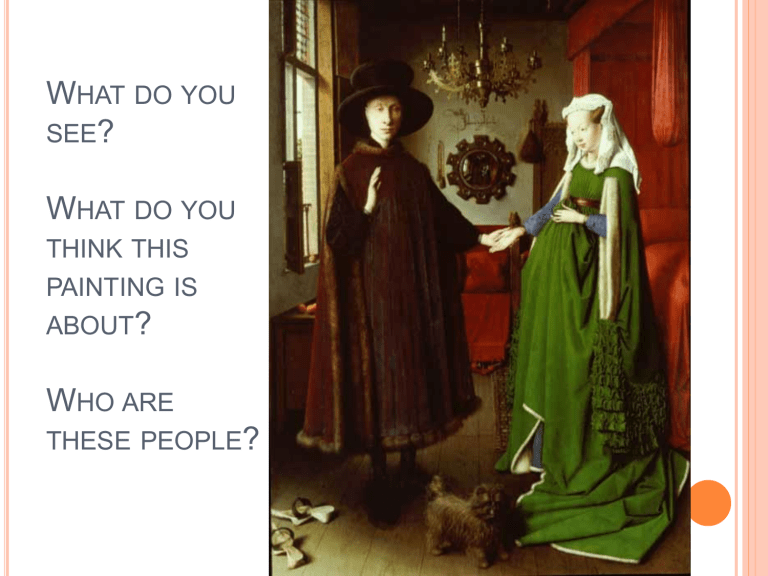
W HAT DO YOU
SEE ?
W HAT DO YOU
THINK THIS
PAINTING IS
ABOUT ?
W HO ARE
THESE PEOPLE ?
L OOK
CLOSER
…
S HORT S TORY U NIT E SSENTIAL Q UESTIONS
What information lies below the surface?
How can close reading reveal information the author buried below the surface?
What details should we leave buried in our own writing?
How do we do this?
How can we apply analytical and observations skills to our own lives?
B ECOMING A L ITERARY D ETECTIVE
T
HE
E
LEMENTS OF
P
LOT
Reading 3.3: Analyze interactions between main and subordinate characters in a literary text (internal and external conflicts, motivations, relationships, influences) and explain the way those interactions affect the plot
W HY IS P LOT S TRUCTURE I MPORTANT ?
PLOT: the organized pattern or sequence of events that make up a story. Every plot is made up of a series of incidents that are related to one another.
The plot draws the reader into the character's lives and helps the reader understand the choices that the characters make.
A plot's structure is the way in which the story elements are arranged. Writers vary structure depending on the needs of the story.
Authors make their stories interesting by manipulating plot structure to create suspense, intrigue, anticipation, and conflict.
B
ASIC
P
LOT
S
TRUCTURE
Climax
The turning point. The main character faces the conflict and changes in some way.
Rising Action
The series of conflicts or events leading up to the climax.
Falling Action
Loose ends of the plot are tied up and the conflicts are resolved.
Conclusion
The story comes to a reasonable ending.
Exposition
Introduces basic information about the story.
Tells the reader who the characters are, where and when the story takes place, and what the basic conflict is.
P
RACTICE
: P
LOT
S
TRUCTURE OF
“C
INDERELLA
”
Climax
The Prince tries the slipper on all the maidens in town to find the woman from the ball. He finally tries Cinderella and the slipper fits.
Rising Action
The King invites all single women to a ball to meet his son, the Prince.
Cinderella’s fairy godmother puts a spell on her so she can attend. The Prince immediately loves Cinderella, but she runs away, leaving her glass slipper behind.
Falling Action
Cinderella’s sisters apologize for being mean to her, and
Cinderella forgives them.
Conclusion
Cinderella marries the
Prince. Her stepsisters marry two lords.
Exposition
Cinderella is a beautiful girl trapped in her evil stepmother’s house. She has three mean stepsisters, and has to do all of the housework. Her real parents died long ago. Cinderella and her stepsisters are eager to get married.
C
HARACT
ER
T
RAITS
Reading 3.4: Determine characters’ traits by what the characters say about themselves in narration, dialogue, dramatic monologue, and soliloquy
C
HARACTERIZATION
An author must use words to create a mental image of the characters in a story.
Authors use characterization to make their characters complex and interesting.
Direct Characterization: the author tells the audience what the personality of the character is .
Ex: “The patient boy and quiet girl were both well mannered and did not disobey their mother.”
Indirect Characterization: the author shows details that reveal the personality of a character.
Ex: “The boy knew he was wrong and did not want to go to bed, but he looked at his mother’s stern face and he dragged himself to his room anyway.”
I
DENTIFYING
C
HARACTER
T
RAITS
VALUES
– what does the character care for?
LONGINGS
– what does the character desire or try to obtain/achieve?
ATTITUDE
– what kind of mental outlook does the character have?
MOTIVES
– what inspires or drives the character to act in a certain way?
INTENTIONS
– what does the character plan to do?
FLAWS
– what imperfections or weaknesses does the character have?
M ETHODS OF C HARACTERIZATION
Authors communicate information about their characters by using:
Physical appearance of the character
Interactions between characters
Narration about the character and hat the character is thinking
Dialogue of or about the character
Actions of the character
